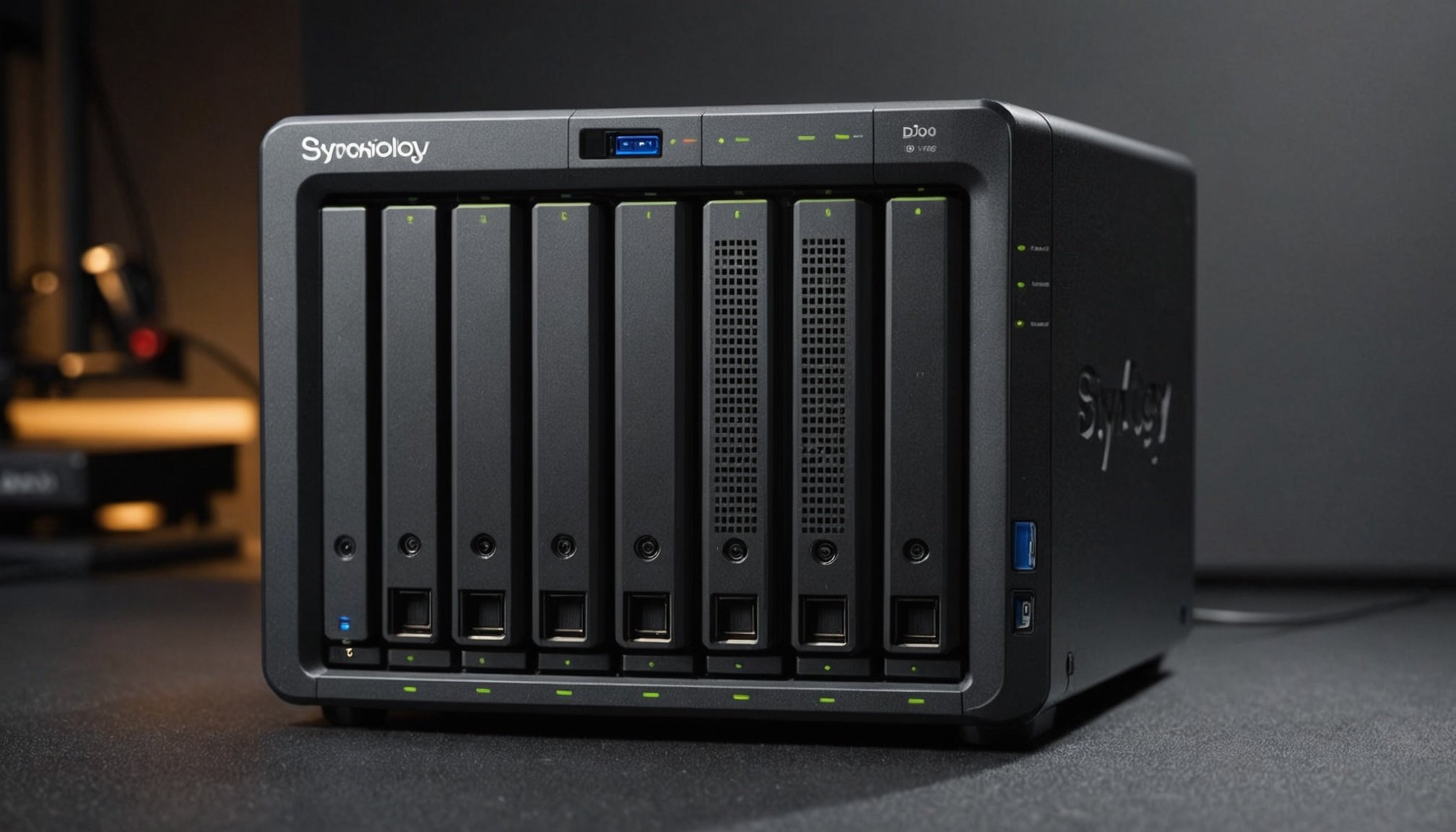Reliable Power Backup Solutions
In today’s ever-evolving digital landscape, Uninterruptible Power Supplies (UPS) play a critical role in ensuring the smooth operation of Network Attached Storage (NAS) systems. For those utilising the Synology DS920+, selecting the appropriate UPS option is paramount to maintaining consistent power supply protection. A well-chosen UPS serves as a battery backup system, safeguarding data from unexpected power interruptions.
When choosing a UPS for your Synology DS920+, consider the power capacity and runtime you require to ensure a seamless transition during outages. Additionally, configuring UPS settings is essential for achieving optimal performance when electricity is compromised. To configure effectively, synchronise power failure behaviour between the UPS and NAS, ensuring seamless shutdown and reboot.
In the same genre : Maximize your synology ds918+: effective storage and backup techniques for a streamlined home office
- Importance of UPS for NAS: Critical data safeguarded.
- Selecting the right UPS: Match capacity to needs.
- Configuring settings: Seamless power management.
These steps not only enhance data protection but also support the longevity of your NAS, providing peace of mind during unforeseen power issues. Selecting the right UPS and configuring it properly ensures that your NAS remains robust and reliable.
Regular Data Backups
In a digital environment, establishing robust backup strategies is essential for maintaining the integrity of your data. Regular backups ensure data redundancy, mitigating risk in cases of hardware failure or data corruption. Utilising Synology’s backup tools simplifies this process by offering user-friendly solutions tailored for consistent and reliable data protection.
This might interest you : Top techniques for building a secure and high-performance file server using intel nuc and windows server 2022
Data redundancy can be achieved by scheduling regular automated backups. This ranks high on the list of best practices, as it reduces the potential for data loss. Synology’s built-in tools enable seamless and scheduled backups, alleviating the need for extensive manual intervention. These tools inherently support various data redundancy protocols, providing flexibility in your backup strategy.
External backup methods complement Synology’s solutions by offering an additional layer of data safety. Methods such as off-site cloud backups and USB storage utilise physical or virtual media to store copies of crucial data. They provide invaluable protection against loss scenarios where local backups might fail.
By employing a combination of Synology’s built-in tools and external strategies, users can establish a comprehensive data protection plan, ensuring backup reliability and minimising downtime for the Synology DS920+.
Proper Configuration Settings
Optimising your NAS setup not only enhances data performance but also plays a critical role in maintaining data integrity configuration. For the Synology DS920+, certain adjustments can significantly influence system reliability.
Key to optimising data integrity is enabling write caching. This feature helps expedite data writing processes onto the drives, ensuring smooth operations especially with larger files. However, it’s essential to be cautious as enabling write caching requires a UPS for safe power outages, protecting cached data from unforeseen interruptions.
Moreover, configuring notifications for power outages and system alerts will provide immediate awareness of potential issues, allowing for prompt action. Customise these Synology settings to send alerts directly to your email or mobile device, ensuring you’re constantly informed of your NAS status.
Finally, implement best practices by regularly reviewing and adjusting Synology settings as needed. Stay informed about firmware updates to maintain system security and functionality. By attentively configuring your NAS, you ensure the longevity and reliability of your data storage solution.
Use of RAID Configurations
Understanding RAID levels is crucial for enhancing data protection within NAS disk setups. Different RAID configurations offer varying levels of redundancy and performance, making them suitable for diverse needs.
RAID 1 mirrors data across two disks, providing heightened security since it duplicates data for redundancy. In contrast, RAID 5, utilising striping with parity, ensures efficient storage and faster read operations, making it advantageous for data recovery. For the Synology DS920+, RAID 5 is often preferred due to its balance between speed and security, especially useful when handling larger datasets.
Configuration of RAID on Synology NAS involves several steps. Begin by accessing the DSM (DiskStation Manager) and navigating to the storage manager. Select ‘Create’ to set up a new RAID array, choosing the appropriate RAID level based on your disk setups. Follow the wizard to finalise the configuration, ensuring all disks are correctly installed and recognised.
Understanding these configurations aids in establishing a robust and reliable storage system, offering a comprehensive approach to safeguard critical data against hardware failures and ensuring continuity in data access.
Preventive Measures
Proactively implementing data safety protocols ensures the longevity and reliability of your Synology DS920+ system. Regular system monitoring is key to identifying potential issues before they lead to data loss or hardware failure. Utilising NAS-specific monitoring tools can help track performance and health metrics, providing insights into system status.
Consistent system maintenance, such as cleaning dust from hardware components and checking for software updates, supports optimal operation and avoids unexpected disruptions. Scheduled maintenance can prevent issues related to wear and tear, ultimately extending the life of your NAS devices.
To safeguard against power surges and outages, integrating preventive strategies is critical. Employ surge protectors and consider installing Uninterruptible Power Supplies (UPS) to facilitate a seamless transition during power interruptions. These measures not only protect hardware but also ensure data integrity during unforeseen events.
Additionally, keeping your Synology system’s firmware and software updated is crucial. Updates often include patches that improve security and fix bugs, enhancing overall system stability. By prioritising these preventive measures, you contribute to long-term data safety and operational efficiency for your NAS setup.
Software Solutions for Data Integrity
Enhancing data integrity on your Synology NAS goes beyond hardware configuration—Synology apps and monitoring tools are vital. For instance, data integrity software can provide continuous monitoring and alerts for potential integrity issues, ensuring data remains uncorrupted and consistent.
Utilising snapshots is an effective strategy for data recovery. This process involves capturing the state of your data at specific points in time, making it possible to revert to a previous state if accidental deletions or corruptions occur. Enabled within Synology DSM, snapshots offer robust protection, allowing you to quickly restore data without disrupting ongoing operations.
Adhering to best practices in software updates and maintenance is crucial. Regular updates not only safeguard against vulnerabilities but also enhance feature sets and fix bugs. Set up automatic notifications to stay informed about available updates, ensuring your NAS remains secure and efficient.
Employing these software solutions supports a proactive approach to safeguarding data integrity, enabling a reliable and resilient Synology NAS environment.
Post-Power Interruption Recovery
In the event of a power interruption, executing systematic recovery processes is critical to ensure stability and data preservation. Data restoration begins with assessing the NAS troubleshooting needs.
Firstly, verify the NAS system’s integrity by inspecting connected components and ensuring power is restored via Uninterruptible Power Supplies (UPS). Once stabilisation is achieved, check system logs for any alerts or irregularities caused by the interruption. These logs help pinpoint issues needing immediate attention, thereby streamlining the recovery process.
Following inspection, leverage stored backups to facilitate data restoration. Utilise Synology’s built-in tools to access your scheduled backups, ensuring data restoration is both swift and comprehensive. It’s imperative to verify data consistency by running integrity checks post-restoration.
Addressing NAS troubleshooting involves diagnosing common post-outage issues such as disk failures, damaged file systems, or network connectivity problems. Regular system diagnostics and checking drive health using Synology’s DSM features can rectify potential concerns.
Finally, establish preventive strategies to mitigate future risks, integrating scheduled maintenance to bolster system resilience. Consistent evaluation and adjustments of recovery processes ensure data safety and operational reliability after power interruptions.











